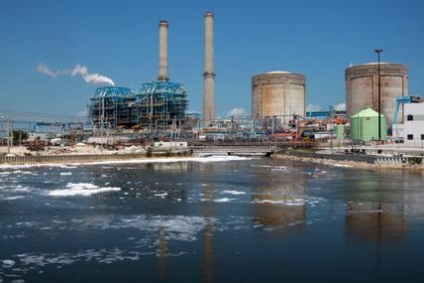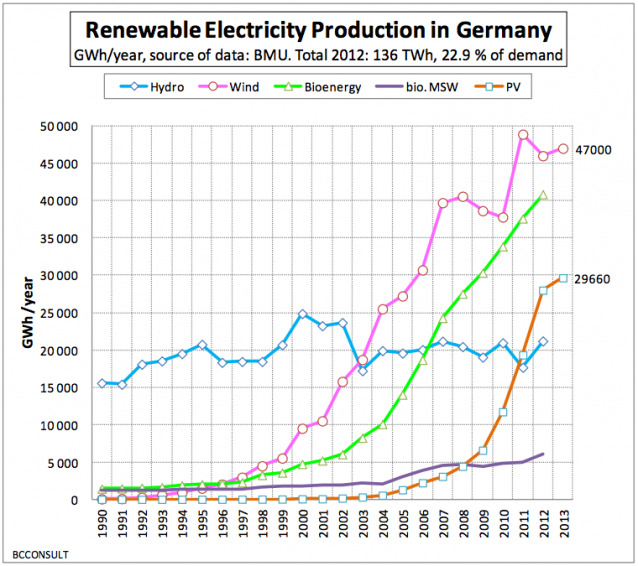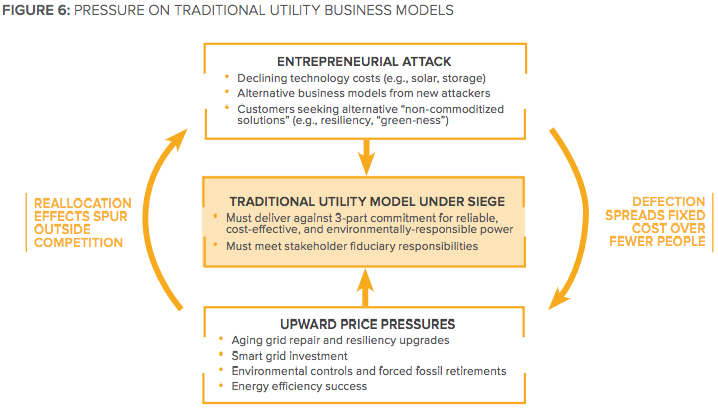
A hearing is being held today in Florida on whether FPL should be allowed to build two new reactors at its Turkey Point site near Miami. The hearing is for a state permit, FPL would still need a license from the NRC to be able to build. And FPL has said it hasn’t decided yet whether it wants to build the reactors, which would be expected to cost about $18 Billion. An FPL spokesperson made the astonishing claim that the reactors would save $170 billion in fuel costs over natural gas over the next 60 years; we guess FPL alone has the crystal ball that can predict natural gas prices over that period, not to mention its certainty that the unbuilt reactors would receive a license extension to operate that long.
And, of course, the fuel cost savings over solar, wind and energy efficiency, the alternatives being promoted by Turkey Point opponents in The Sunshine State, would be a negative number. Then there’s that little matter of climate change, with Miami being one of the most vulnerable cities in the U.S. to climate-induced disaster.
“Harold Wanless, chair of geological sciences at the University of Miami, sees Turkey Point possibly ‘sitting out in the middle of Biscayne-Florida Bay’ if sea levels rise by 4 feet to 6 feet by the end of the century as recent government studies project.
‘You’d be hard-pressed to find a worse place to build a nuclear power plant than between two national parks on a hurricane-swept coastline, subject to storm surge and sea-level rise,’ added South Miami Mayor Phillip Stoddard, who also will speak at Tuesday’s meeting.”
Because of Florida’s “early cost recovery” law, Florida ratepayers are paying for FPL’s efforts to get necessary licenses and permits, currently to the tune of 46 cents per month added to their electric bills. That amount would rise steeply if construction on the reactors actually occurred.
Three U.S. Senators today jointly introduced three new bills aimed at improving the safety of high-level radioactive waste storage at reactor sites as well as improving safety at decommissioned reactors. The three, Sens. Ed Markey (D-Mass.), Barbara Boxer (D-Calif.) and Bernie Sanders (I-Vt.) issued a joint press release announcing the bills.
Markey: “Experts agree that a spent fuel pool accident could have consequences that are every bit as bad as an accident at an operating reactor. In Massachusetts, Pilgrim nuclear plant’s spent fuel pool contains nearly four times more radioactive waste than it was originally designed to hold. Nuclear waste must be moved to safer storage now before the next nuclear disaster occurs.”
Boxer: “ In my home state of California, the San Onofre nuclear plant has closed permanently, and this legislation will help guarantee that this facility, and others like it, are safely decommissioned and are no longer a liability for local communities.”
Sanders: “Every state with a nuclear power plant has a strong interest in how that plant is decommissioned. This is about making sure that states and local communities can play a meaningful role in a decision that has enormous economic, environmental, and community impacts.”
One bill, The Dry Cask Storage Act of 2014, would require the NRC to set a plan for removal of irradiated fuel, and for utilities to adopt such a plan and move their fuel from existing fuel pools to dry casks within seven years. The bill uses a carrot and stick approach: “The legislation also provides funding to help reactor licensees implement the plans and expands the emergency planning zone for non-compliant reactor operators to 50 miles.”
The other two bills would forbid the NRC from granting exemptions from emergency planning rules for decommissioned reactors–something several utilities and currently seeking; and would seek to ensure that a transparent and public process for developing decommissioning plans with full involvement of local communities.
Prospects for passage of the bills is uncertain at best, although as chair of the Senate Environment Committee, which has jurisdiction over the NRC, Sen. Boxer is certainly in a position to hold hearings and move the bills through her committee to the Senate floor.
Earthtrack has long been an indispensable source of information about subsidies to energy industries. Now Earthtrack’s Doug Koplow has compiled a handy, easily-readable guide to the 10 energy subsidies that cause the most distortion to the energy markets–i.e. that favor one element of the industry over another. Number one, of course, is the absence of any costs for greenhouse gas emissions–even though they cost astronomical amounts for society generally. High among them is the Price-Anderson Act and similar measures worldwide that limit utility liability in the event of nuclear accidents. Also included are government support for high-level waste disposal and utilities’ free use of water for cooling of nuclear reactors and other thermal power plants.
Worried about prospects for a gradual French withdrawal from nuclear power–President Francois Hollande wants to reduce the country’s reliance on nuclear from its current 78% to 50% by 2025–the chair of France’s Atomic Energy Commission (CEA) is trying a new approach. Bernard Bigot of the CEA said today that France needs to build 35 new reactors to meet that 50% goal, because so many older reactors will retire in the coming decades. Of course, Bigot is assuming France won’t want to go below 50% once that goal is achieved–otherwise all those new reactors wouldn’t be needed. But he is aware of the possibility: “Mr Bigot said it will be “very difficult” to reduce France’s nuclear share to 50 percent from the current 75 percent without building new reactors to replace aging units. He warned that by 2050 or 2060 France could find itself with no nuclear power stations.” Imagine that: a nuclear-free France by 2050. Sounds good to us.
Meanwhile, France’s top auditor has slammed the nation’s reactor manufacturer Areva for “a lack of oversight of multi-billion euro projects, the remuneration of the supervisory board members and what it calls the ‘excessive’ package former Chief Executive Officer Anne Lauvergeon received when she left the company.” Areva lost 99 million Euros in 2012, an amount that grew to a 494 million Euro loss in 2013. “The auditor’s report also pointed at ‘individual faults or failings, at least in terms of oversight’ in Areva’s $2.5 billion acquisition of Canadian uranium mining company UraMin in 2007. France’s financial prosecutor has opened a preliminary investigation in the case, sources said last month.”
A Freedom of Information request by Scotland’s Sunday Post revealed that security at the U.K.’s nuclear facilities has been breached an average of eight times per month since 2010. But the documents obtained did not reveal the nature of the security breaches and the government agency responsible does not seem inclined to release information about them. A spokesperson for the Scottish National Party said he will be bringing the issue to the U.K.’s House of Commons this week.
Ok, the headline of this story from SmartGridNews is scary: The grid attack that could kill 9 out of 10 Americans (and North Korea is capable). The story itself is not new–but it’s pretty scary too: “Experts told the House Homeland Security Committee that an electromagnetic pulse (EMP) attack aimed at the power grid could leave 9 out of 10 Americans dead through starvation, disease and societal collapse. That dire warning came from Peter Vincent Pry, a member of the Congressional EMP Commission and executive director of the Task Force on National and Homeland Security.” An EMP event could come from detonation of an atomic weapon 25-300 miles above the U.S. or even from a major solar flare–something other experts have warned against–and unsuccessfully petitioned the NRC to address–for years. Because not only would an EMP event cause an extended loss of electricity absent strengthening of the electric grid, an extended nationwide loss of electricity would also cause meltdowns of every nuclear reactor in the country–something too many of the experts on the issue tend to leave out of their already dire scenarios.
Clean Energy
The Ohio Senate last week passed a bill to roll back the state’s energy efficiency and renewable energy standards. If passed by the Ohio House and signed by Governor Kasich, this would represent the first major victory of the national assault on renewable energy led by the Koch Brothers and the extremist American Legislative Exchange Council (ALEC). Today’s post on the American Council for an Energy Efficient Economy’s (ACEEE) blog dismantles the arguments used by opponents of renewable energy, but appears resigned to passage by the House. Although Gov. Kasich has said he is likely to sign the bill, ACEEE seems to hope that he can be dissuaded from doing so. Ohioans should certainly let the governor know just what they think of the bill.

Germany set a new record Sunday afternoon, generating 74% of its electricity from renewable sources. That was so much renewables that electricity prices actually went into negative numbers during the afternoon. Overall, renewables provided 27% of the country’s power during the first quarter of 2012. Nuclear advocates continue to criticize Germany’s Energiewende, or energy transformation, but Germany continues to prove them wrong, as this article goes into in more detail.
A much smarter editorial from the New York Times than its recent and absurd reasoning that the Chernobyl disaster somehow showed the need for more nuclear power. In this one, the Times applauds New York State’s new efforts to lead “a revolution in the world of electricity generation.” And indeed, the state is actively taking major steps to promote clean energy. Wrote the Times: “In its most basic form, what the commission is talking about is an increasingly decentralized system dominated not by big generating stations but by smaller stations located throughout the state, many of them using renewable sources like solar or wind power.” There is real hope for New York’s energy future; perhaps there is some hope for the Times as well.

We’ve written a lot about the “utility death spiral” and how utilities that fail to adapt to the changing realities of electricity generation and distribution will themselves fail and disappear. This article provides a very readable explanation of the concept, and quotes David Crane of NRG Energy on the new players in the field, “‘These new entrants—Comcast, Google, SolarCity and Tesla spring to mind—are eating away at the traditional utility business model by providing products and services, directly to the consumer, which are deemed essential to the enrichment of their life experience,” NRG Energy CEO David Crane wrote in a recent open letter to the power industry.
“Companies like Amazon, Apple, Facebook and Google have achieved ‘comfortable ubiquity […] in the hearts and minds and everyday lives of the vast majority of people,’ Crane said, by relating, connecting, enabling and empowering their customers.”
NRG Energy has its own designs on this new marketplace, and intends to become one of the largest players in this future. For starters, its goal is to “seamlessly” offer rooftop solar to its current three million residential customers.
Michael Mariotte
May 13, 2014
Permalink: https://www.nirs.org/2014/05/13/nuclear-newsreel-tuesday-may-13-2014/
You can now support GreenWorld with your tax-deductible contribution on our new donation page here. PayPal now accepted. We gratefully appreciate every donation of any size–your support is what makes our work possible.
Comments are welcome on all GreenWorld posts! Say your piece above. Start a discussion. Don’t be shy; this blog is for you.
If you like GreenWorld, you can help us reach more people. Just use the icons below to “like” our posts and to share them on the various social networking sites you use. And if you don’t like GreenWorld, please let us know that too. Send an e-mail with your comments/complaints/compliments to nirs@nirs.org. Thank you!
Note: If you’d like to receive GreenWorld via e-mail daily, send your name and e-mail address to nirs@nirs.org and we’ll send you an invitation. Note that the invitation will come from a GreenWorld@wordpress.com address and not a nirs.org address, so watch for it.



